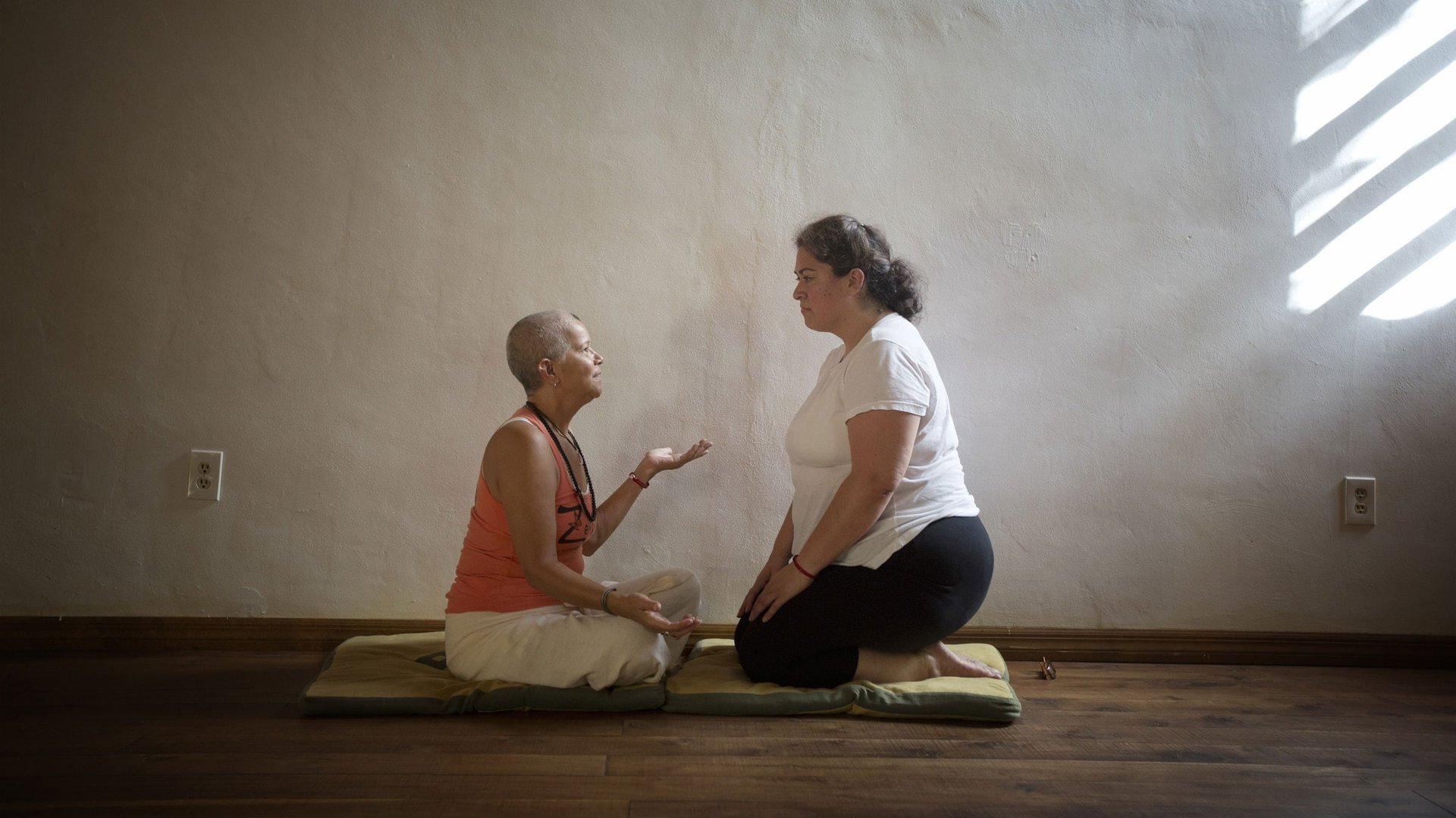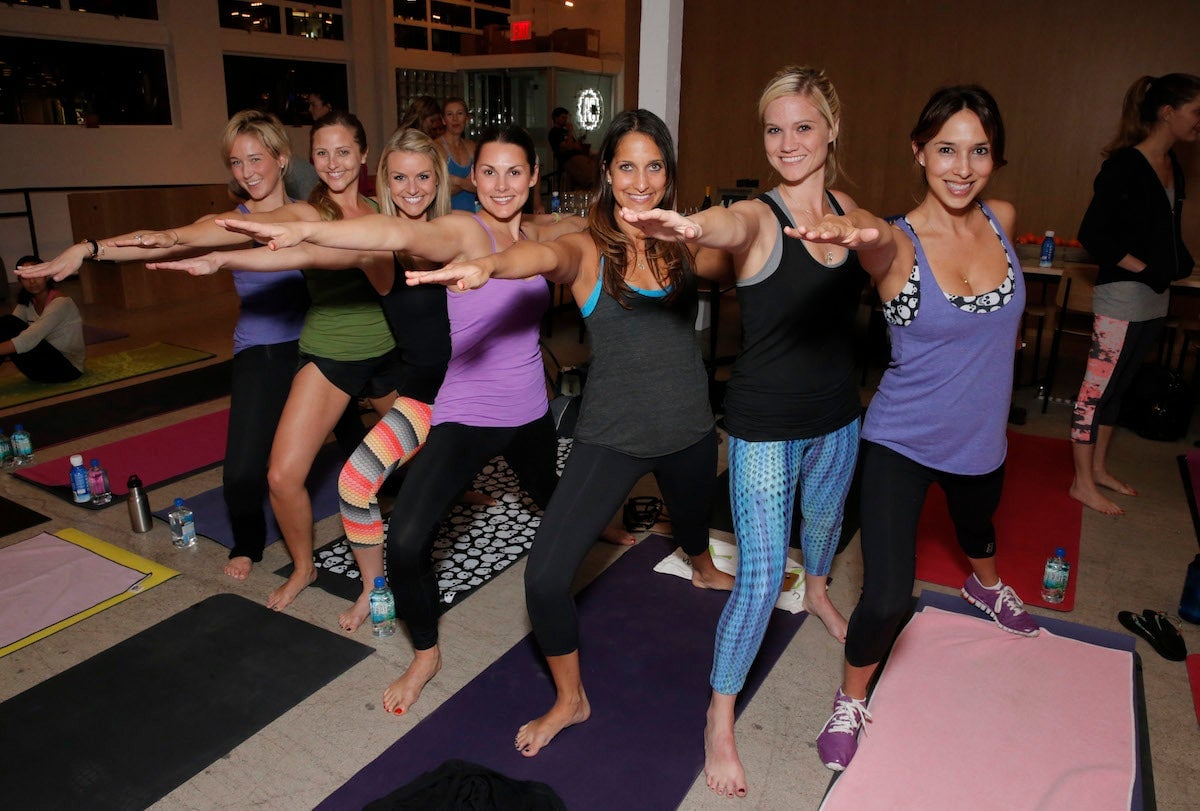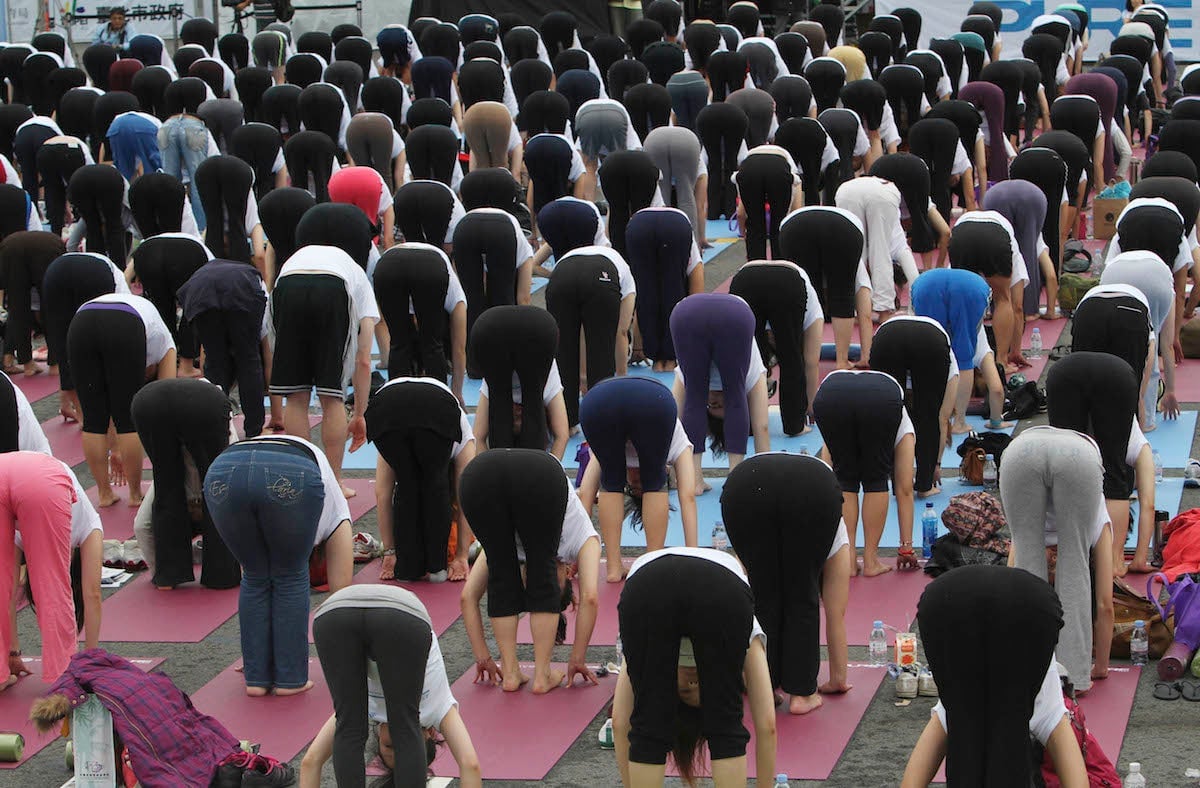Gap is counting on Americans to spend all day in their yoga pants
This post has been corrected.


This post has been corrected.
Mass fashion retail thinks it has found a new formula for ubiquity and profits on the scale of denim jeans. It’s yoga-wear, or as Gap is calling it, “soft dressing.”
After Gap reported disappointing earnings last week, CEO Glenn Murphy highlighted its Athleta workout-wear store chain as the most promising area for the US retailer. The purveyor of breathable tank tops with internal bras, gently flared yoga pants, and ChaturangaTM tights (also known as leggings), blew past Banana Republic, Old Navy, and even the Gap’s flagship brand on a same-store basis.
Soft dressing: a new term for a new era
“This is the new denim,” Murphy declared of athletic wear on an earnings call in February, when he emphasized the success of Athleta, and said that Gap Body’s athletic wear was moving to the fronts of stores, rather than being relegated to the underwear section.

He expounded upon the point last week with some creative new nomenclature for the category: “A new definition of sweatpants, street wear, soft dressing.” Soft dressing! It makes sense, since so many of us are not actually working out in our workout gear. We are commuting in comfort, running errands with efficiency, working from home in secret spandex. Soft dressing: it’s not just for exercise. And that ever-widening market (especially if we never exercise in those pants) is just what the Gap is going after, with 35 new Athleta stores slated to open in the US in the next six months, bringing the total to more than 100 stores.
It’s all about the pants
If we want to blame someone for this trend, we may look to Chip Wilson, the founder of Canadian soft-dressing retailer Lululemon Athletica. At Lululemon, where pant prices hover around $100, the gear comes with a dose of rhetoric that has led some to compare the brand’s many fans and employees to a cult.

Some have attributed Lululemon’s success to its rather specific company culture. (Others are repelled by it.) But after attending a substantial number of yoga classes in Manhattan, where Lululemon gear proliferates, I would argue there may be some magic in the pants themselves. I’ve never worn a pair, but I get the sense that Lululemon’s fabrics have a flattering effect—soft dressing for hard bodies. And let’s be honest, most of us want our yoga gear to make our bodies look like we’ve been practicing yoga, a lot. The first time I heard about Lululemon was from a friend: “Yoga pants that make your ass look good? That’s priceless!”
Gap’s Murphy would likely agree. “We’re in the bottoms business as a total company,” he said last week. (Bottoms in this case meaning pants.) At full-price, Athleta’s pants only cost a little less than Lululemon’s, but they go on sale more often. So if the company can make those ChaturangaTM tights look as appealing Lululemon’s LuxtremeTM leggings (commercial naming conventions for yoga pants remain a mystery), next quarter’s earnings call might be very good indeed.
Correction (May 28): An earlier version of this post incorrectly stated Gap would open 100 new Athleta stores in 2014. The company will open 35 new stores, bringing the total number to 110.